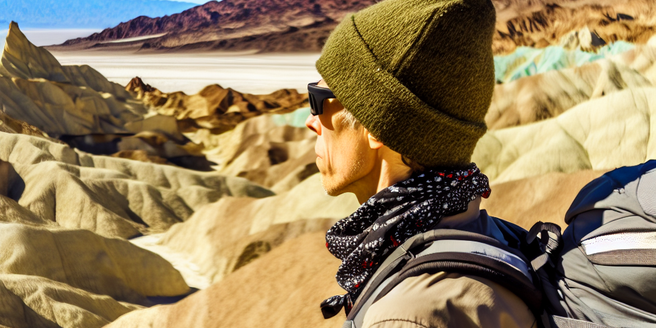
Understanding the Diversified Climate of Western America
The climate of Western America is as diverse as its geography- from the rainy forests of the Pacific Northwest to the dry deserts of the Southwest, the towering peaks of the Rocky Mountains, and the vast farmlands of California’s Central Valley. Each region offers unique challenges due to their varied weather, ecology, and geography. Understanding this diversity is essential for safe exploration, making Western America a fascinating study subject for adventurers, scientists and environmentalists.
Clothing Essentials for Surviving Western America’s Climate
In Western America’s diverse climates, appropriate attire is key to comfort and survival. The range of environments necessitates proper outfits for safety and resilience. For instance, the rugged mountains demand thermal and waterproof gear due to plummeting temperatures and abundant precipitation. Moving down to the arid desert, the wardrobe changes significantly, with light, breathable fabrics required to counteract the scorching heat and relentless sun. The Pacific Northwest, notorious for its constant rain and soggy conditions, calls for water-resistant clothing. No matter the specific region in Western America, it’s wise to have extra layers available as a sudden drop in temperature or sudden rain could occur. It’s also crucial to change out of wet clothes immediately as a preventive measure against hypothermia, a potentially deadly condition triggered by prolonged exposure to cold, especially when damp. Thus, correct clothing is vital while traversing the varied climates of Western America, ensuring comfort, protection against the elements, and prevention of potential medical emergencies.
Hydration and Nutrition Tips for Western America’s Weather Challenges
Staying satisfactorily hydrated is especially important in the dry regions of Western America where water is scarce. Carrying a sustainable water source, like a refillable bottle or camelbak, is advisable, but also having a portable water purification system could save your life in case you cannot refill from reliable sources. Feeding appropriately is necessary and based on regional climate. In colder regions where your body burns extra energy for warmth and in hot areas where the heat zaps your energy, it’s best to focus on high-calorie foods, particularly carbohydrates and fats. Conversely, restrict intake of protein-rich foods in scorching regions, as they can increase your body temperature, require more water for digestion, and cause dehydration. Thus, the main emphasis should be on staying hydrated.
Shelter and Fire-Building Techniques for Western Climate
Understanding how to build a secure shelter is invaluable for survival in different environments. The kind of shelter depends on the geographical area; for example, if you’re in a region dominated by lush woods, using available resources like branches and leaves is helpful. On the other hand, in regions with sparse vegetation, such as arid, dry landscapes, building a shade shelter becomes paramount to protect against strong sun rays and prevent heat-related conditions.
Another key survival skill is knowing how to start a fire using different techniques. Fire serves numerous purposes, from creating warmth to deterring wild animals and cooking food. The methods used to start a fire can range from contemporary methods, like a lighter or matches, to traditional ones, like friction or flint and steel. These crucial survival skills are highly beneficial for anyone spending time in wild environments, potentially making the difference in life-and-death situations.
Incorporating Indigenous Survival Tactics into Your Adventure
Indigenous wisdom, gained through centuries of experience and adaptability, is invaluable in finding resources and surviving extreme weather. Examples include the techniques used by the Navajo tribe in arid lands, that rely on rainwater and hidden springs for survival amidst rough, water-scarce terrain. These methods could be instrumental to those settled in drier regions of Western America, especially facing persistent droughts. Also, the Mountain Tribes exhibit age-old practices to endure harsh snowy conditions, involving techniques like building insulated shelters, creating heat sources, and using animal pelts for warmth. People living in Western America’s higher elevations, with intensive winters, can greatly benefit from these practices. Hence, centuries-old Indigenous knowledge provides essential tools for tackling different climatic adversities.
